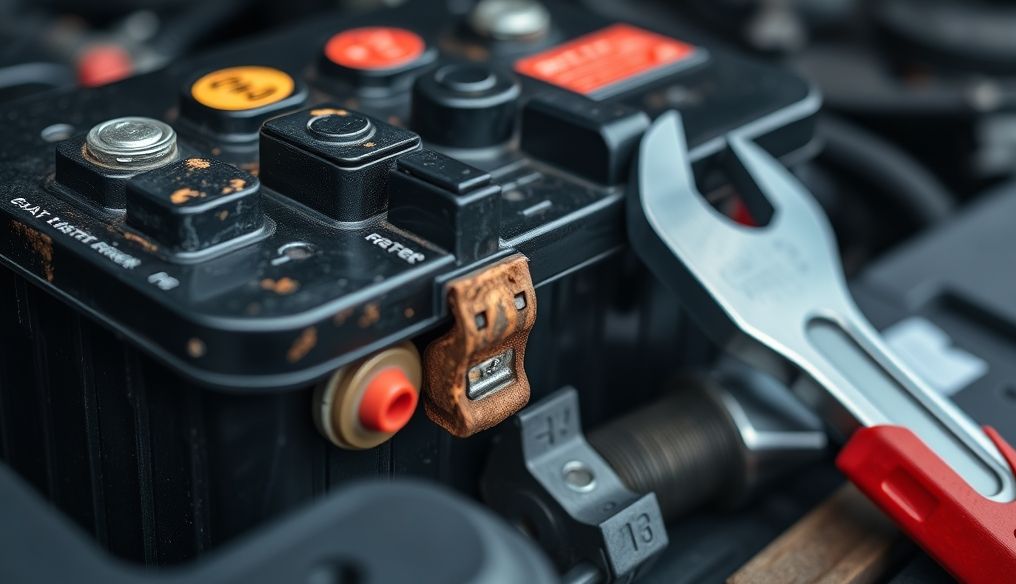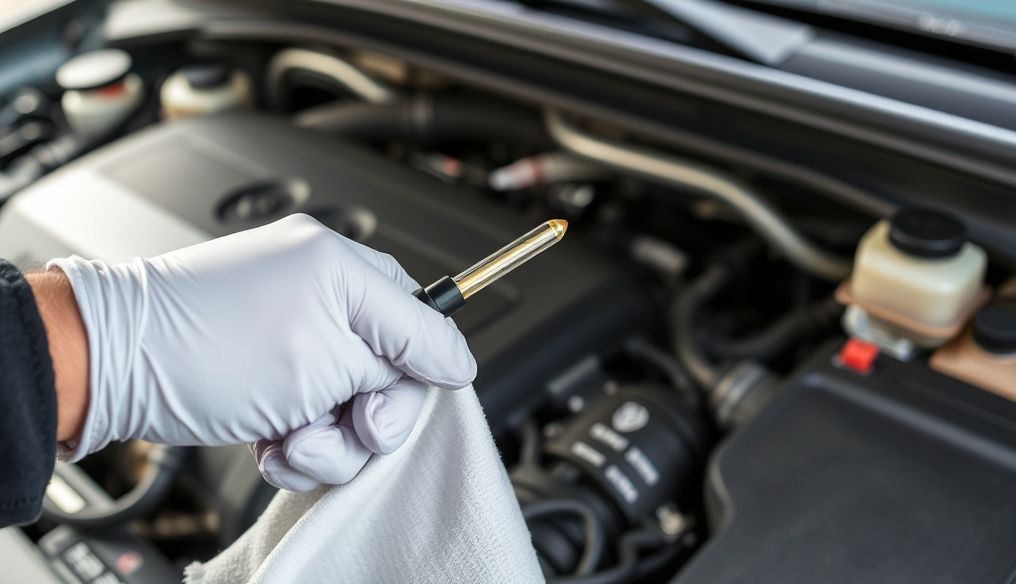Introduction: The Importance of a Car Battery and Signs of Failure
A car battery is one of the most important parts of its operating system, as it is responsible for providing the power needed to start the engine, lighting, air conditioning systems, and other electrical devices. When the battery starts to deteriorate, you may encounter many problems that affect the car's performance and safety. Therefore, it is necessary to know the signs of a failing car battery and how to deal with them to avoid sudden breakdowns and costly repairs.
Chapter 1: Understanding the Function and Types of Car Batteries
What is the Function of a Car Battery?
A car battery acts as a storage device for electrical energy, providing the necessary current to start the engine when starting up. In addition, the battery powers other electrical devices in the car when the engine is off or when power consumption is greater than the charging system's capacity (alternator). In other words, the battery acts as a backup power source ensuring the continued operation of electrical devices in the car.
Types of Car Batteries
- Traditional Lead-Acid Batteries: These are the most common and are considered an economical option. They require regular maintenance such as adding distilled water to maintain the acid level.
- Maintenance-Free (MF) Lead-Acid Batteries: They do not require regular maintenance, as their design prevents the evaporation of acidic liquid. They are considered more durable and reliable than traditional batteries.
- AGM (Absorbent Glass Mat) Batteries: These use an absorbent glass material to absorb the acidic liquid, making them resistant to vibrations and shocks. They are characterized by their ability to provide high current when starting and have a longer lifespan.
- Lithium-Ion Batteries: These are the newest and most advanced, characterized by their light weight, high energy storage capacity, and long lifespan. However, they are more expensive than other types.
Chapter 2: Warning Signs of a Failing Car Battery
Difficulty Starting the Engine
One of the most prominent signs of a failing car battery is difficulty starting the engine. You may notice that the engine takes longer than usual to start, or that it turns over very slowly before it ignites. This indicates that the battery is not providing enough current to start the engine efficiently.
Dim Headlights
If you notice that the headlights of the car are dimmer than usual, it may be due to a weak battery. A failing battery may not be able to provide enough current to power the headlights at full capacity, resulting in dim lighting.
Battery Warning Light on the Dashboard
Most modern cars are equipped with a battery monitoring system that alerts the driver when there is a problem with the battery. If the battery warning light appears on the dashboard, this indicates a problem with the battery or charging system, and it should be checked as soon as possible.
Swollen Battery or Leakage
Regularly inspect the battery for any signs of physical damage such as swelling, cracking, or leakage. Swelling can occur due to excessive heat or overcharging, while leakage may indicate internal damage. If any of these signs are present, the battery should be replaced immediately.
Corroded Battery Terminals
Corrosion on the battery terminals can impede the flow of electrical current and lead to problems in starting the car. The battery terminals can be cleaned with a wire brush and a solution of water and baking soda to remove corrosion and improve electrical conductivity.
Strange Noises When Starting the Car
A failing battery may make strange noises such as clicking or buzzing when starting the car. These noises indicate a problem with the battery or charging system, and should be checked by a qualified technician.
Chapter 3: Causes of Car Battery Failure
Harsh Weather
Harsh weather can significantly affect the life of a car battery. Extreme heat can cause the acidic liquid inside the battery to evaporate, reducing its ability to store energy. Extreme cold can slow down the chemical reactions inside the battery, making it less efficient in providing the current needed to start the engine.
Leaving Lights or Electrical Devices On
Leaving lights or electrical devices in the car on while the engine is off can drain the battery quickly. Even small devices such as mobile phone chargers can consume a significant amount of energy in the long run, leading to battery failure.
Not Using the Car for a Long Time
Not using the car for a long time can lead to the battery discharging naturally. The battery loses its charge slowly even when not in use, and if the car is left for a long time without running, the battery may need to be recharged or replaced.
Charging System Problems
Problems in the charging system, such as a faulty alternator or voltage regulator, can cause the battery not to charge properly. This can lead to battery failure and reduce its lifespan.
Driving Short Distances Frequently
Driving short distances frequently does not allow the battery to fully charge. The battery needs enough time to charge while driving, and if the distances are too short, the battery may not be able to recover its full power, leading to its failure in the long run.
Chapter 4: How to Check a Car Battery
Visual Inspection
Start by visually inspecting the battery to make sure there are no signs of physical damage such as swelling, cracking, or leakage. Also, check the battery terminals to make sure they are clean and free of corrosion.
Using a Battery Tester
A battery tester can be used to measure the battery voltage and condition. Connect the device to the battery terminals and follow the instructions on the device to get an accurate reading. The battery voltage should be around 12.6 volts when the engine is off.
Checking the Charging System
The charging system can be checked using a voltmeter. Start the engine and measure the voltage at the battery terminals. The voltage should be between 13.5 and 14.5 volts when the engine is running. If the voltage is outside this range, there may be a problem with the charging system.
Load Test
A load test is a more accurate test of the battery's condition. It involves placing an electrical load on the battery and measuring the voltage during the load. If the voltage drops significantly during the test, this indicates that the battery is weak and needs to be replaced.
Chapter 5: How to Deal with a Failing Car Battery
Recharging the Battery
If the battery is weak but not completely damaged, you can try recharging it using a battery charger. Follow the instructions on the charger and fully charge the battery before using it again.
Cleaning the Battery Terminals
If the battery terminals are corroded, clean them with a wire brush and a solution of water and baking soda. Disconnect the battery terminals before cleaning and reconnect them after cleaning.
Replacing the Battery
If the battery is completely damaged or if you cannot recharge it, it should be replaced with a new battery. Make sure to choose a battery that is suitable for your car and follow the instructions in the user manual to replace the battery correctly.
Disposing of the Old Battery Properly
Car batteries contain materials that are harmful to the environment, so they must be disposed of properly. Take the old battery to a recycling center or a car parts store for safe disposal.
Chapter 6: Tips for Extending Car Battery Life
Driving Regularly
Driving regularly helps to fully charge the battery and extend its lifespan. Try to drive the car for long distances frequently to allow the battery to fully charge.
Turning Off Lights and Electrical Devices When the Engine is Off
Make sure to turn off all lights and electrical devices in the car when the engine is off to avoid draining the battery.
Checking the Charging System Regularly
Check the charging system regularly to make sure it is working properly and that the battery is charging fully.
Keeping Battery Terminals Clean
Keep the battery terminals clean and make sure they are free of corrosion to improve electrical conductivity.
Avoiding Exposing the Battery to Extreme Heat
Try to avoid exposing the battery to extreme heat by parking the car in the shade or using a battery cover.
Chapter 7: Necessary Tools and Equipment for Checking and Maintaining Car Batteries
- Battery Tester: To measure battery voltage and condition.
- Battery Charger: To recharge a weak battery.
- Wire Brush: To clean corroded battery terminals.
- Solution of Water and Baking Soda: To clean battery terminals.
- Wrench: To loosen and tighten battery terminals.
- Protective Gloves: To protect hands from chemicals in the battery.
- Protective Glasses: To protect eyes from chemicals in the battery.
Chapter 8: When to Consult a Professional Technician?
Although some car battery checking and maintenance can be done yourself, in some cases you should consult a professional technician. If you are unsure how to check or replace the battery, or if you have any other problems with the charging system, it is best to consult a professional technician to avoid any potential damage.
Conclusion: Maintaining the Car Battery for Better Health and Performance
The car battery is an essential part of the car's operating system, and keeping it in good condition ensures better performance and avoids sudden breakdowns. By knowing the signs of a failing car battery and following the tips mentioned above, you can extend the battery life and keep your car in excellent condition.




